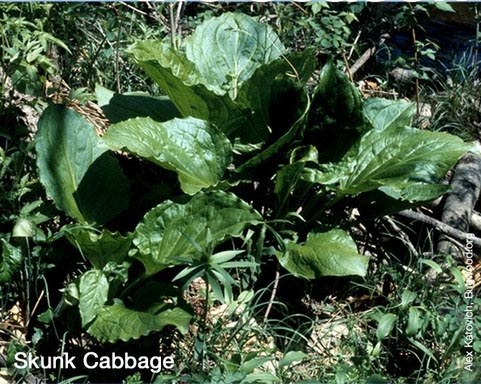Posted: March 30, 2022
Skunk cabbage is one of the first wetland plants to emerge in the late winter, early spring. How does it grow when there is snow and ice on the ground? Read about the unique characteristic of skunk cabbages.

Photo by bugwood.org
Skunk cabbage (Symplocarpus foetidis) is a large flowering plant of wetlands that emerges in March. Skunk cabbage is unique because its flowers can produce heat, up to 86 degrees above the outdoor temperature, to melt surrounding ice and snow in its marshy environment.
The dark purple and yellow flowers smell like skunk which attracts pollinators that enjoy its odor. Skunk cabbage has a massive root system but reproduces by tiny seeds that mature in the flowers. By late summer the plant crumbles leaving only a few stalks.
Historically, skunk cabbage has been used in a variety of folk medicine traditions. Native Americans used skunk cabbage as a healing agent.
The Virtual Nature Trail at Penn State New Kensington: Skunk Cabbage
Sights of the Season is a series of articles written by Master Gardener Sheila Salmon on plants that the public can see in the current landscape.

